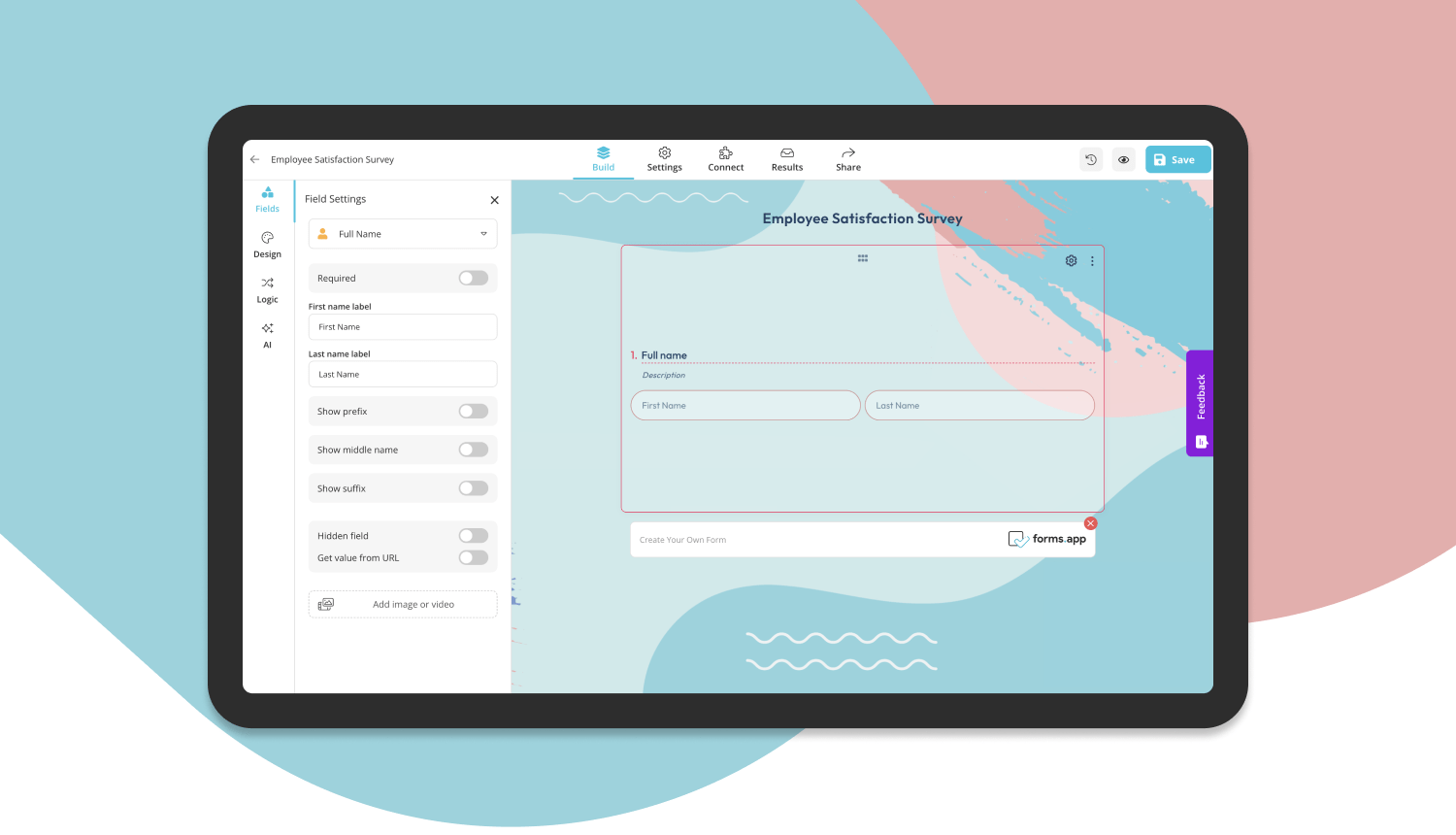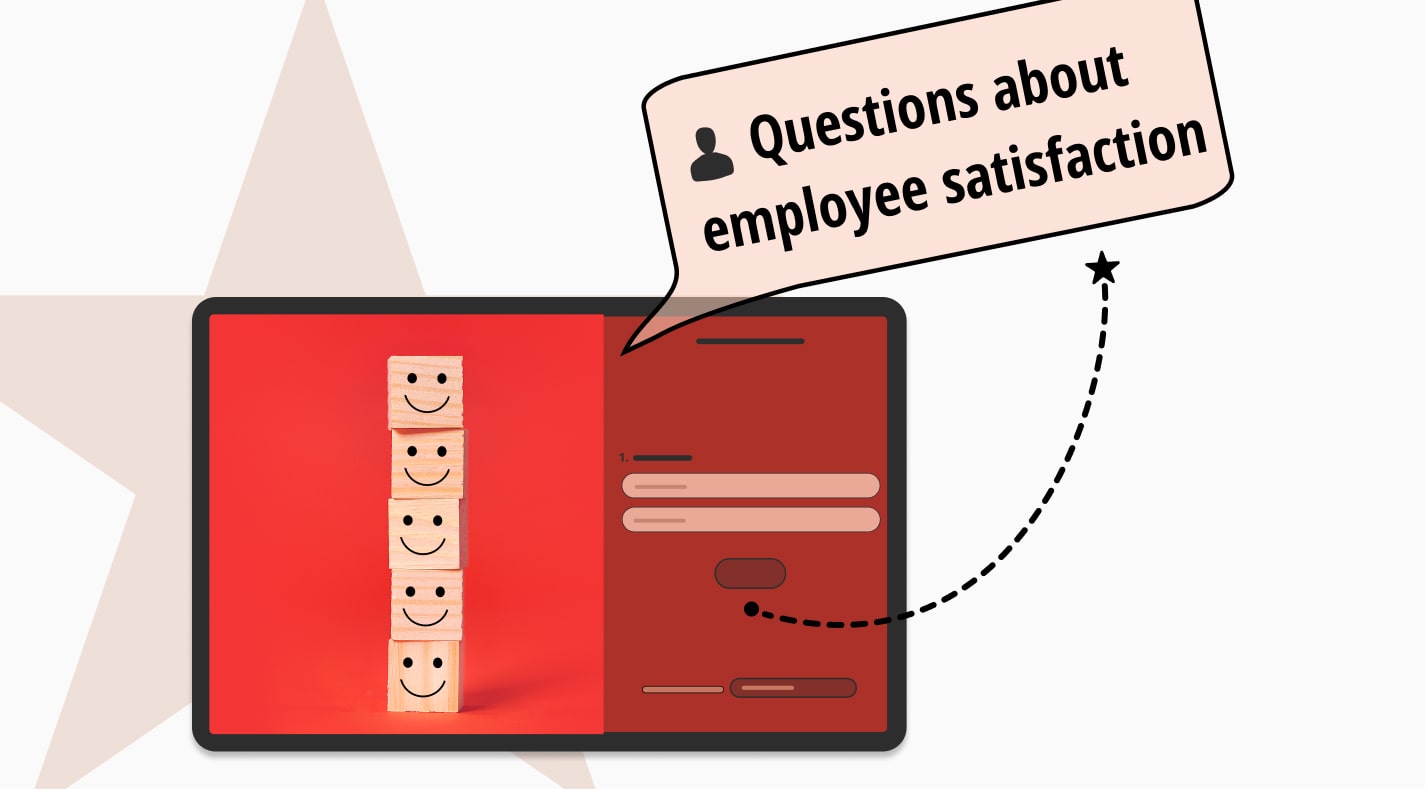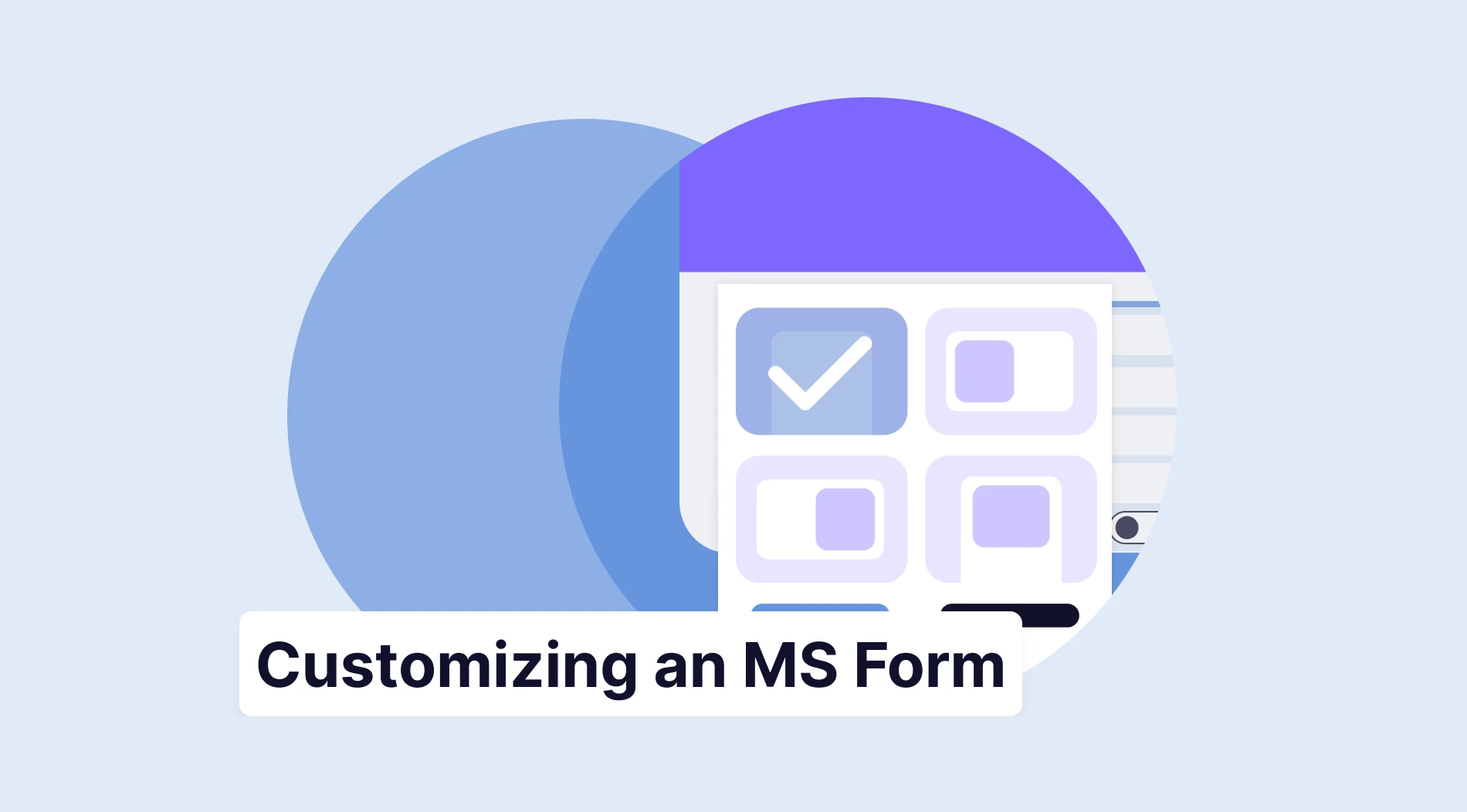Employee engagement, productivity, and retention are all directly impacted by employee satisfaction, making it a critical component of any organization's success. Employers should conduct employee satisfaction questionnaires to better understand the views, requirements, and opinions of their business.
“Work hard, have fun, make history.” - Jeff Bezos
An efficient way to solve this problem is to perform employee satisfaction questionnaires, which can help you pinpoint the problems that employees may be having and create specialized solutions to boost their engagement and contentment. In this article, we listed 35 amazing employee satisfaction survey questions for your inspiration.
Why does your business need an employee satisfaction survey?
According to an article by Zippia, an online recruitment company, only 49% of American workers report being “very satisfied with their work,” while 30% are merely “somewhat satisfied.” These statistics are concerning, as low employee satisfaction can lead to a range of negative consequences for both employees and their organizations.

Benefits of conducting employee satisfaction surveys
Job satisfaction questionnaires collect information directly from employees and offer insightful information about their perspectives, attitudes, and experiences, allowing firms to detect areas for development and take appropriate action to raise employee satisfaction. Here’s a list of the benefits of conducting an employee satisfaction survey for your company.
- Increasing performance and productivity: You can increase employee engagement and motivation by addressing issues and making changes, which will boost output and performance. Addressing issues and making changes based on employee feedback can also improve morale and reduce stress levels, leading to a more productive workforce.
- Boosting workplace culture: A supportive work environment can improve employee morale and job satisfaction, which encourages increased loyalty and better performance. Businesses can boost employee morale and performance, which will increase production and profitability, by developing a culture of involvement and cooperation.
- Improving communication: Surveys can act as a forum for direct dialogue between management and employees, providing a chance for employees to voice their opinions and concerns.
- Having a positive brand image as an employer: Organizations that prioritize employee satisfaction and regularly perform employee satisfaction surveys have a positive reputation as desirable employers.
- Recruiting top talent: High levels of job satisfaction and positive employee feedback can serve as powerful recruitment tools, helping to attract top talent to your organization. Happy employees are more likely to share positive experiences with their friends and professional networks, which can lead to more qualified candidates applying for open positions.
- Monitoring changes over time: Employee satisfaction surveys can help you monitor changes in employee satisfaction over time, allowing you to track progress and make adjustments to your workplace policies and practices accordingly.
Generally, employee satisfaction survey questionnaire samples are a valuable tool for companies. Both the employees and the business can benefit from these surveys. This can lead to employee happiness and an engaged workplace as employees feel valued and heard by their employer. Also, employee satisfaction survey questionnaire samples give companies and employees a forum for open dialogue.
35 amazing employee satisfaction questions for your next questionnaire
Happy and satisfied employees tend to be more productive, engaged, and motivated to contribute to the organization's growth. The questions below also have their question type written next to them, so it’s faster for you to add them to your forms. With the help of these questions in your employee satisfaction survey, you can gain a deeper understanding of your employees' experiences.
Questions about job satisfaction and workload
Understanding how employees feel about their work and the quantity of work they are responsible for is the goal of questions concerning workload and job satisfaction. Workload questions can focus on the number and complexity of tasks assigned, the availability of resources and support, and the impact of workload on employee stress levels and work-life balance.
1 - On a scale between 1-10, how satisfied are you with your current job? (Opinion scale)
2 - Do you think that your current salary and benefits are enough? 💰 (Yes/No)
3 - How can you ensure your work-life balance? ⚖️ (Multiple selection)
4 - Was this job your primary preference? (Yes/No)
5 - Are your responsibilities clear? (Yes/No)
6 - How often do you feel you have to work outside of your regular working hours to meet deadlines? (Single selection)
7 - Do you feel sufficient in your role? (Yes/No)
Questions about the company culture and objectives
Understanding the company culture can give insight into the organizational communication style, values, and business environment, thus improving employee satisfaction. Some common questions in this category include asking about the work environment, company's core values, mission, and vision.
8 - How do you feel about the level of transparency within the company? (Long text)
9 - How satisfied are you with the company's approach to work flexibility? (Opinion scale)
10 - How well do you feel the company recognizes and rewards employee achievements and contributions? 🏅(Star rating)
11 - Has the company provided you with a distraction-free work environment? (Yes/No)
12 - How satisfied are you with the company's approach to health and wellness? (Opinion scale)
13 - If our company were a famous person, who would we be and why? 😎 (Long text)
14 - On a scale of 1 to 10, how supported do you feel in terms of career growth and development opportunities? (Opinion scale)
Questions about staff communication and collaboration
Effective communication and collaboration among staff members are crucial for the success of any organization. These questions may include topics such as the use of communication tools and technologies, strategies for effective teamwork, methods for resolving conflicts, and respect among team members.
15 - How do you feel about the level of collaboration and teamwork within your department? (Long text)
16 - What's your favorite emoji to use in work messages? ❤(Short text)
17 - What do you think about cross-cultural communication within the company? (Long text)
18 - Do you feel that the company provides sufficient training and resources to support effective communication and collaboration among team members? (Yes/No)
19 - In which way(s) does the company support informal communication and collaboration? (Multiple selection)
20 - On a scale of 1 to 10, how well do you feel the company promotes and supports constructive feedback? (Opinion scale)
21 - Does the company provide sufficient opportunities for employees to provide feedback on communication and collaboration practices? (Yes/No)
Questions about employee-employer relationships
The relationship between employees and their employers determines how employees feel about their work and how committed they are to the organization. Answering these questions requires a deep understanding of the needs and expectations of both employees and employers.
22 - How satisfied are you with the level of feedback and support provided by your direct supervisor? (Opinion scale)
23 - Does the feedback you receive help you grow and develop? 🆙(Yes/No)
24 - Do you feel valued and respected by your employer? (Yes/No)
25 - What type of opportunities does your company provide to advance your skills and knowledge in your current role? (Multiple selection)
26 - Are there any employer rules or practices that you believe prevent you from doing your work well? (Yes/No)
27 - How would you rate the level of job security you feel with your current employer? (Star rating)
28 - Have you ever felt that a concern you brought up was not satisfactorily addressed by your employer? (Yes/No)
Questions about employee feelings
Organizations may need to conduct surveys, focus groups, or interviews with their employees to get feedback and insights into their feelings. Organizations may discover areas for improvement, create plans to deal with problems, and foster a healthy workplace culture in this way.
29 - Do you feel comfortable voicing your opinions and concerns to your team or manager? (Yes/No)
30 - How do you feel about the physical workspace and office environment? (Long text)
31 - How satisfied are you with the level of trust and respect within your team and the company as a whole? 🤝 (Star rating)
32 - On a scale between 1-10, how well do you feel the company supports your physical and mental health needs? (Opinion scale)
33 - How often do you feel appreciated or recognized for your work contributions? (Single selection)
34 - If you could rate the morale of your team on a scale of 1 to 10, what score would you give and why? (Opinion scale)
35 - How often do you feel energized at work? (Single selection)
How can you create an employee satisfaction survey?
We have mentioned that creating an employee satisfaction survey is an effective way to gather feedback from employees and understand their perceptions, needs, and opinions.

Building an employee satisfaction survey
Whether you're new to conducting employee satisfaction surveys or looking to improve your existing survey, you can quickly and easily build a professional-looking employee satisfaction survey with forms.app that will help you better understand the needs of your staff members and enhance their job satisfaction. Here are the steps to be followed:
1 - Go to forms.app and sign up for a free account, or log in if you already have an account.
2 - To create a new form, click on “Create new form.”
3 - Choose from the most appropriate survey templates or start from scratch.
4 - Put a title on your survey form that precisely describes its goal, such as “Employee Satisfaction Survey” or “Job Satisfaction Questionnaire."
5 - Add questions and make changes as you wish.
6 - Now, your survey is ready!
7 - Choose your sharing options, such as whether to embed the survey on a website or send it via email.
8 - Utilize the statistics page and response filters on the form.app to detect the areas to improve.
5 amazing tips for creating better feedback survey for employees

5 Tips for better employee feedback surveys
Companies must continually try to improve their operations and raise employee satisfaction levels in today's fiercely competitive business environment. They can develop strategies that promote employee engagement and productivity with employee satisfaction surveys. In this regard, the following tips can be useful for companies looking to make the most of their employee surveys and achieve sustainable growth.
- Think about the timing: The survey should be delivered at a time when most employees will have the time and mental capacity to complete it.
- Perform pulse surveys: A brief, repeated set of questions is known as a pulse survey and is given to employees. As the name "pulse" implies, it is used to regularly elicit opinions from employees on issues including job-related duties, interpersonal communication, and the overall workplace culture.
- Include fun questions in surveys: Add a fun or lighthearted question to the survey to break the ice and create a more engaging and enjoyable experience for employees.
- Use emojis 🤓: Use emojis to add a touch of personality and humor to the survey questions and responses. You can also use humorous graphics or illustrations to break up the text and make the survey visually appealing.
- Offer to be anonymous: If employees have the opportunity to provide anonymous feedback, they might be more forthright and honest.
The most important rule: Use results to take action
Once you’ve gathered employee feedback, use it to make significant improvements at work by acting on the results. You should inform the staff of the results and how their input is being used to enhance the company.
The correct questions can help businesses learn important information about the perspectives, attitudes, and experiences of their staff. In this way, you can create a workforce that is engaged, motivated, and committed to your company's goals. A thorough approach to designing a survey that can assist you in identifying areas for improvement and enhancing employee engagement, performance, and loyalty is provided in our article.
Start your employee satisfaction survey right away to start making improvements to the workplace for everyone. Remember, employee satisfaction is critical to the success of any business!
forms.app, your free form builder
- Unlimited views
- Unlimited questions
- Unlimited notifications



